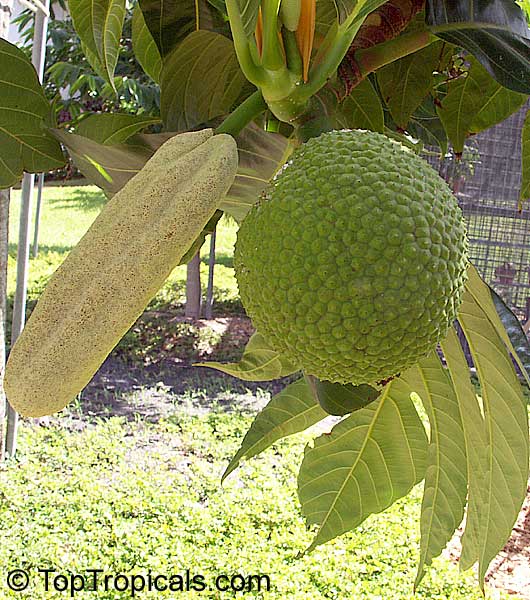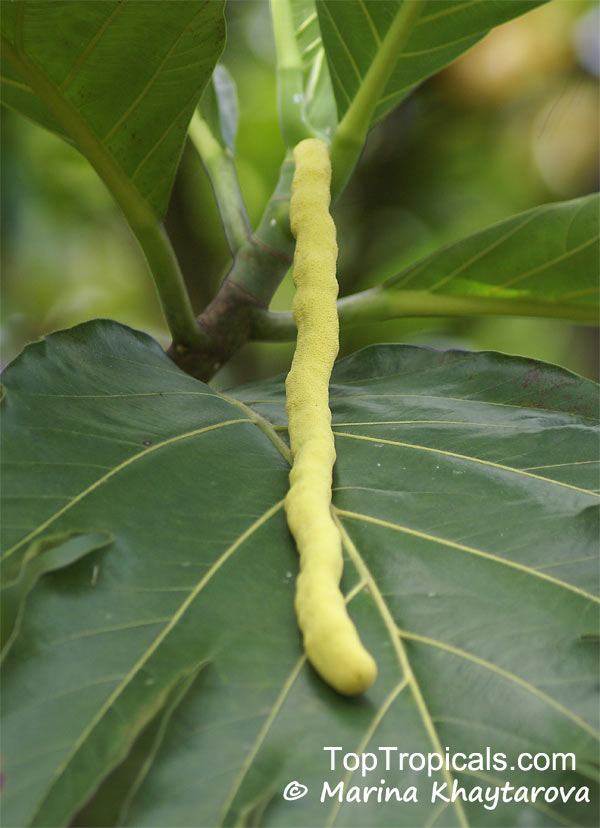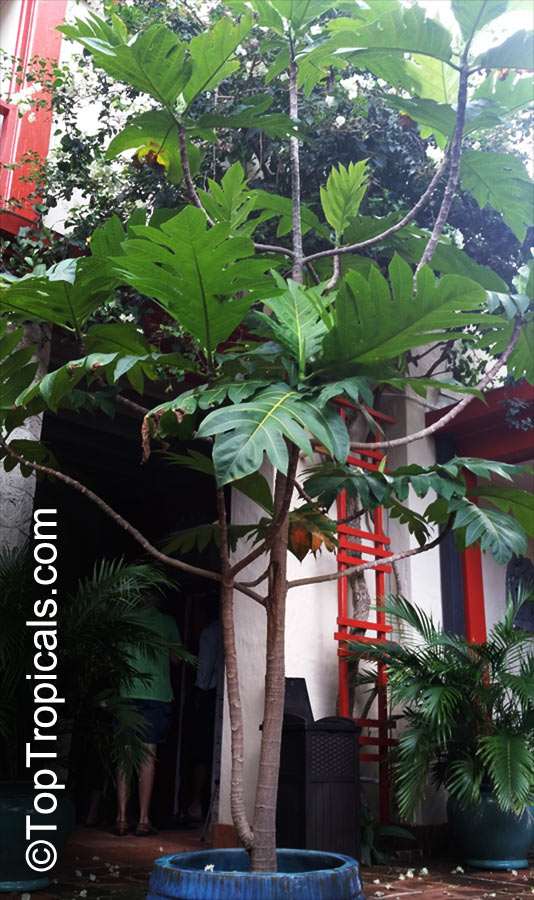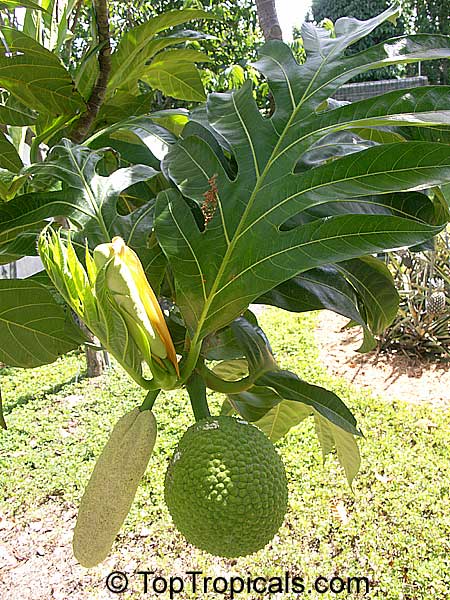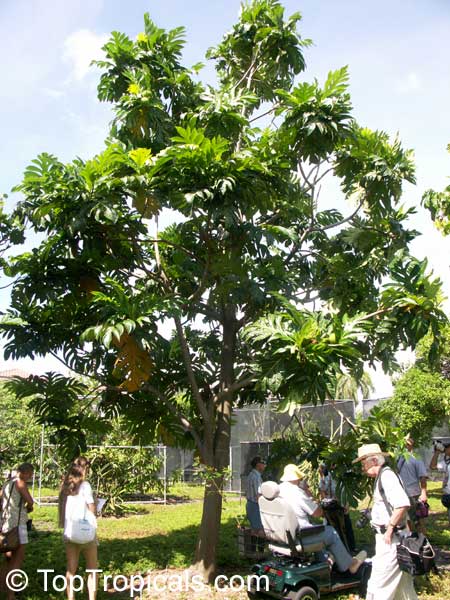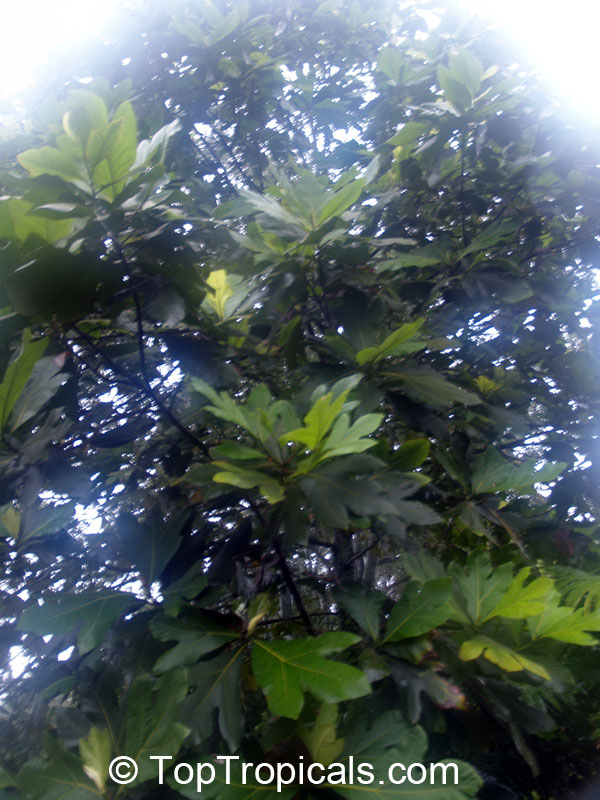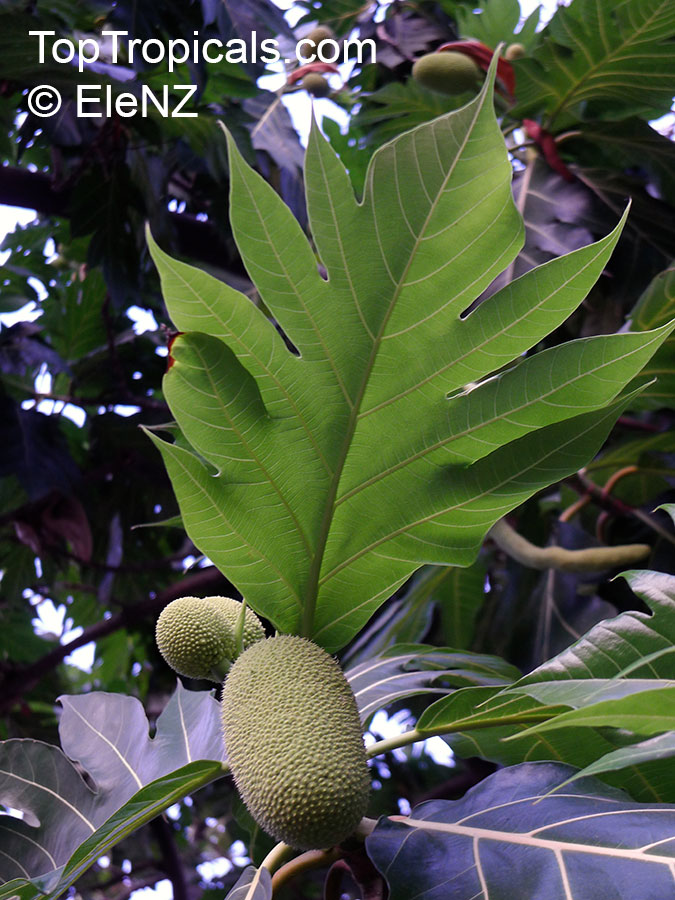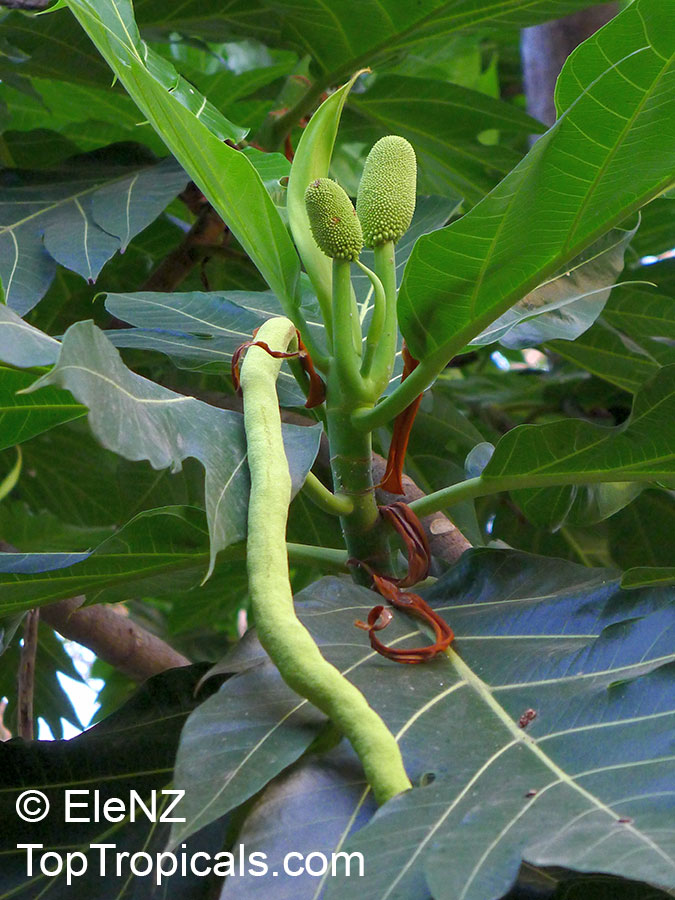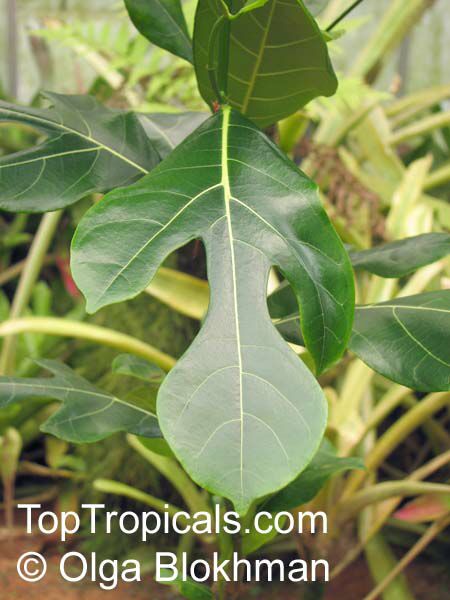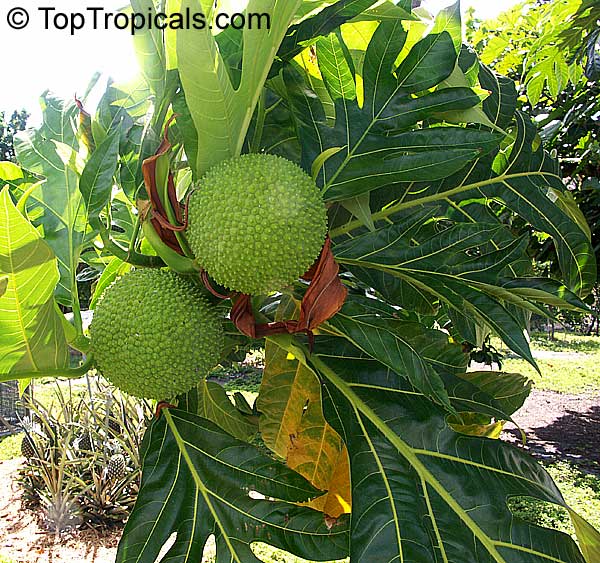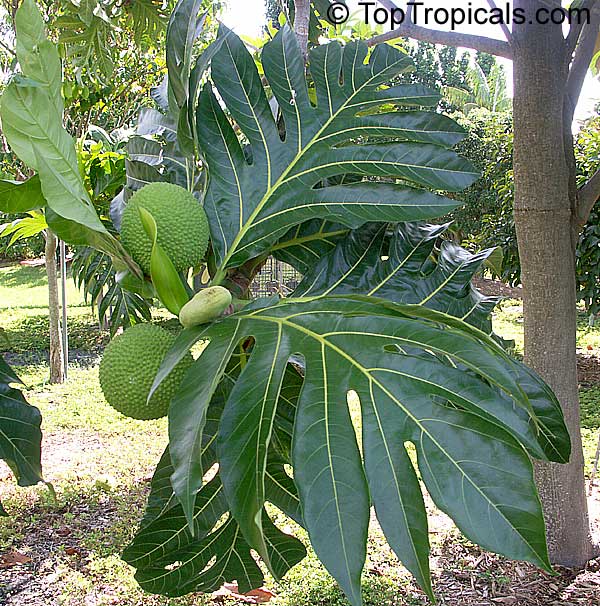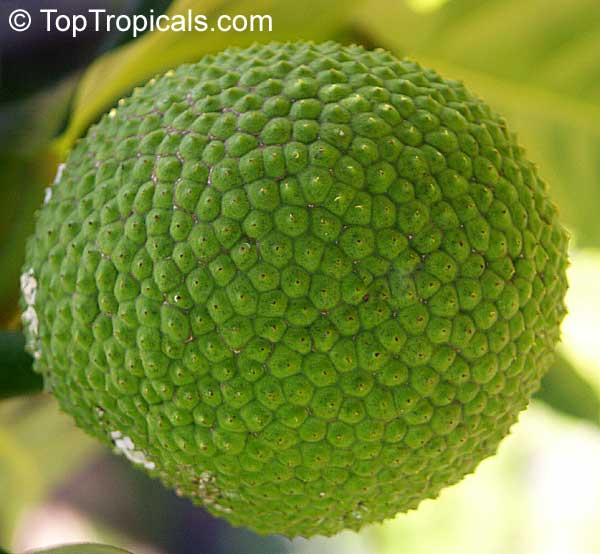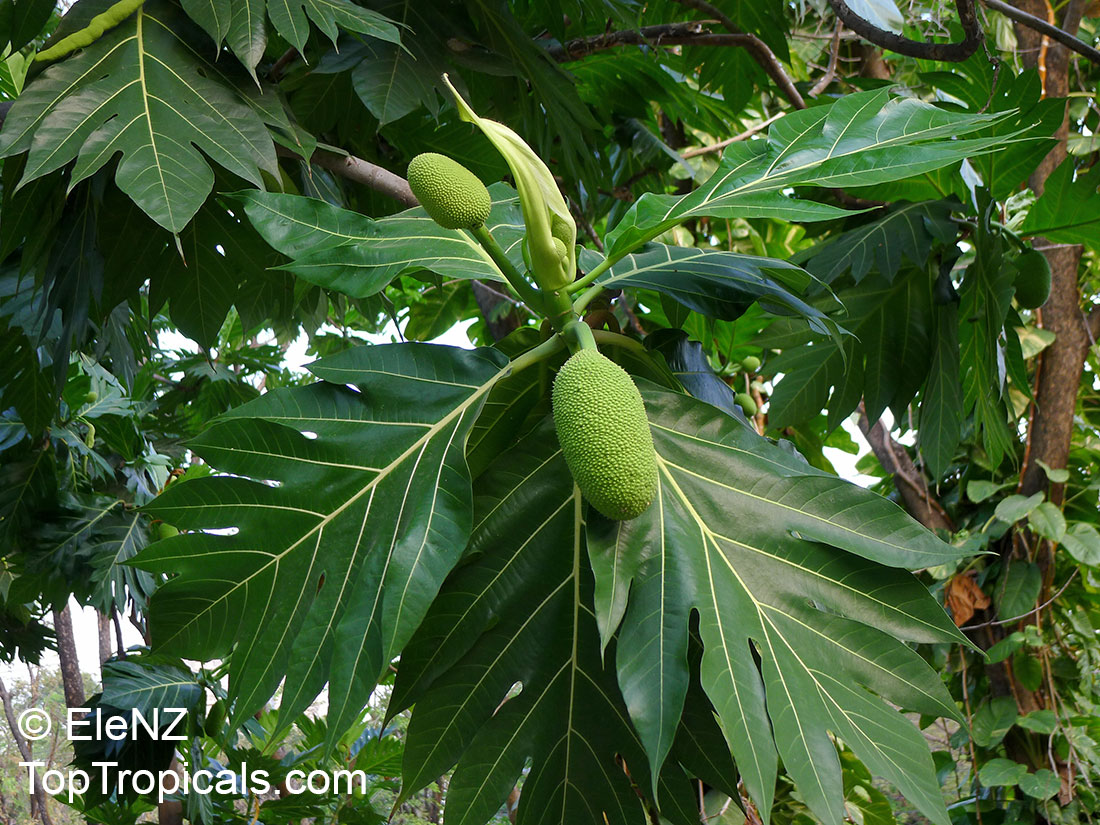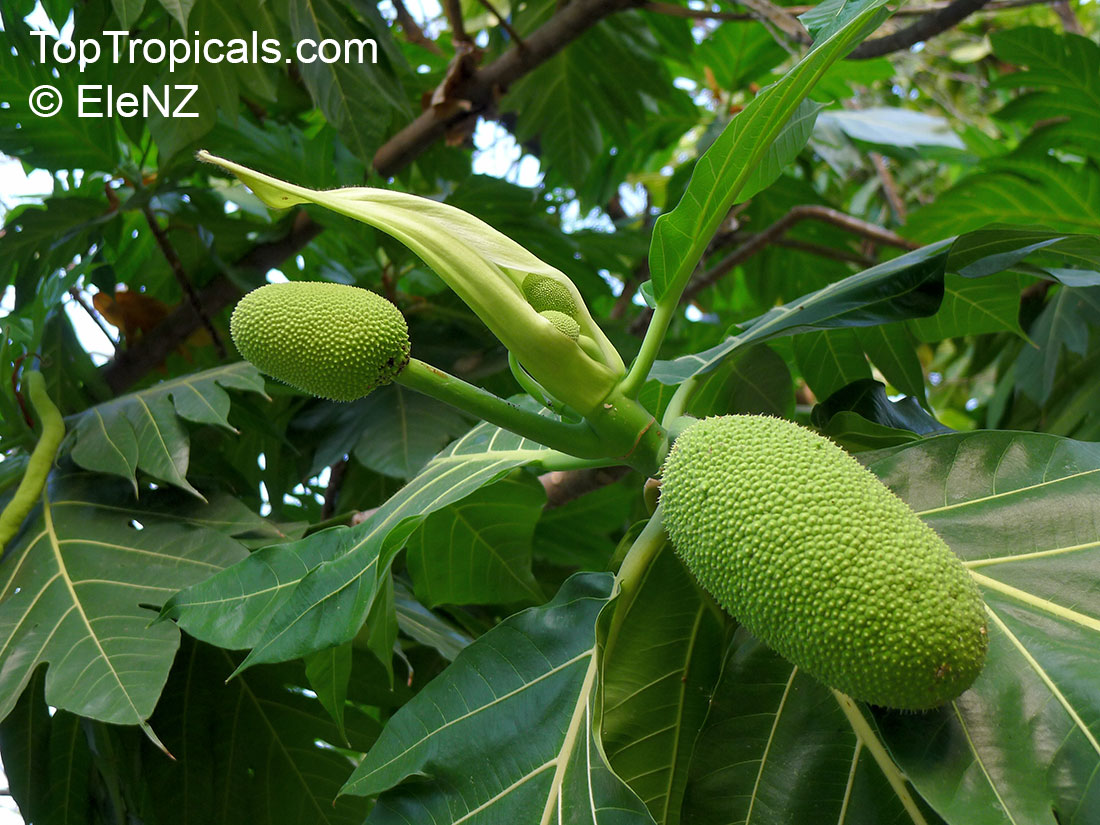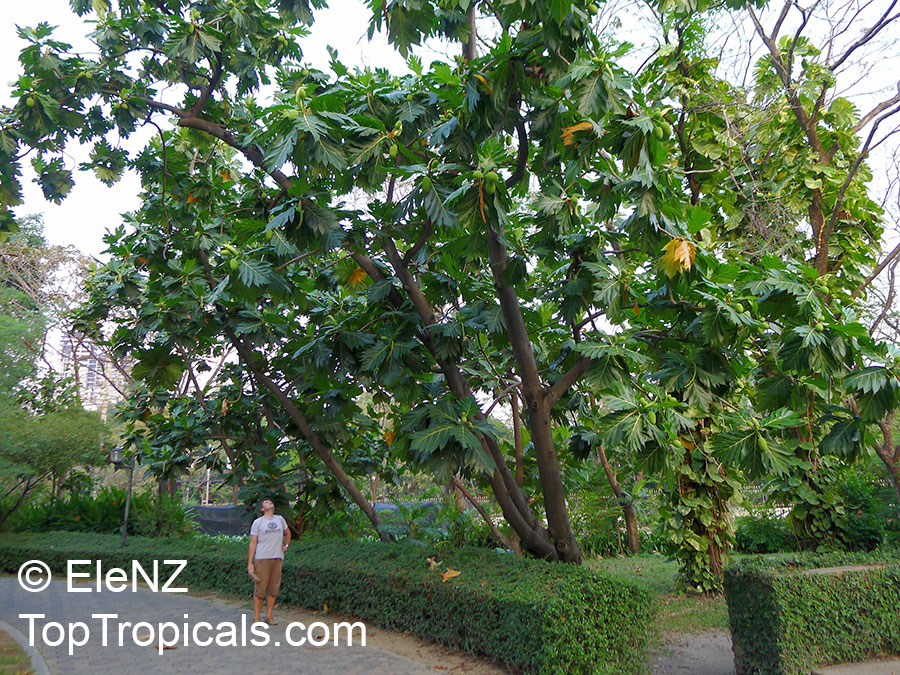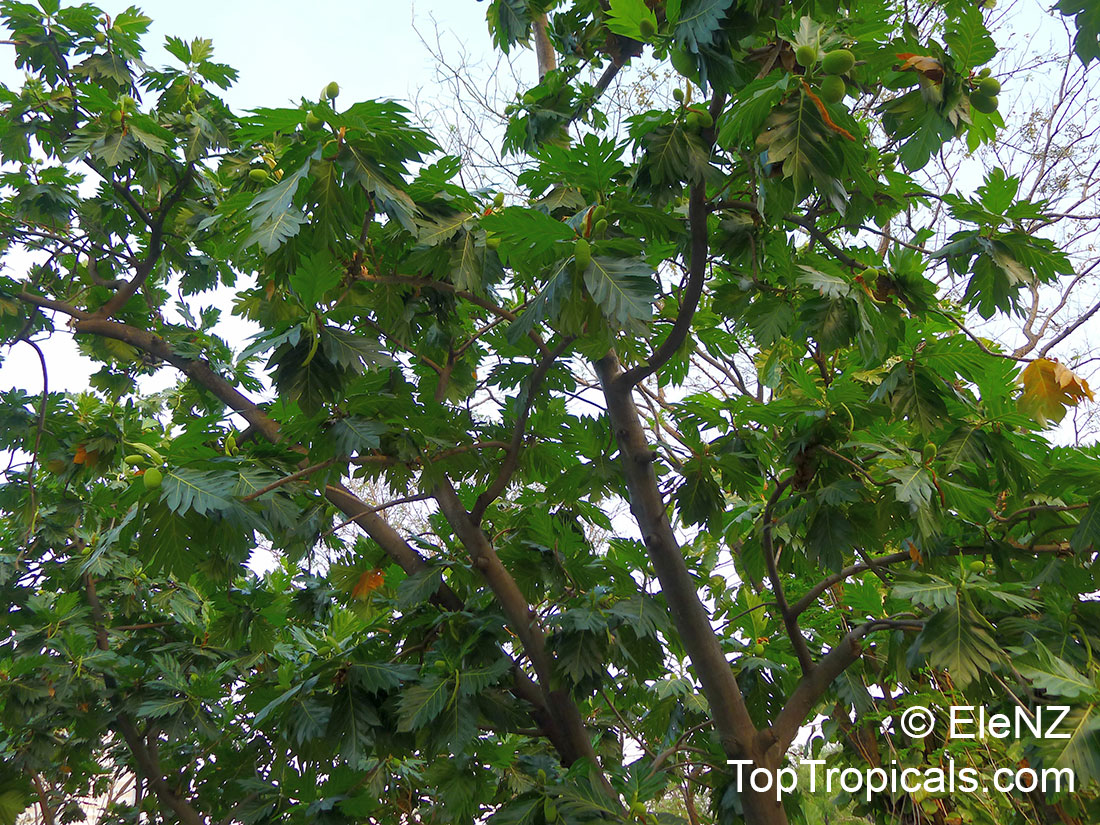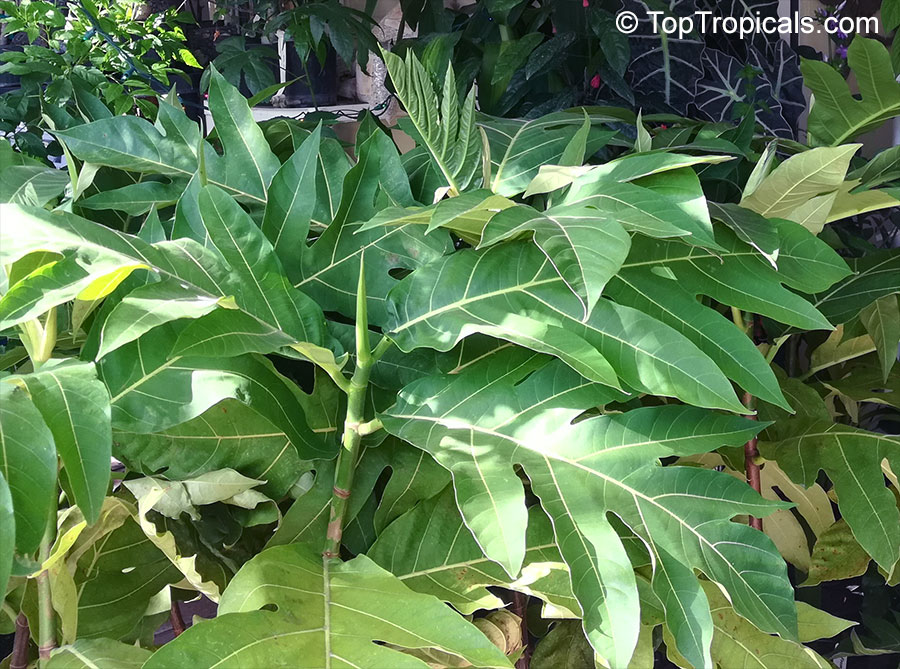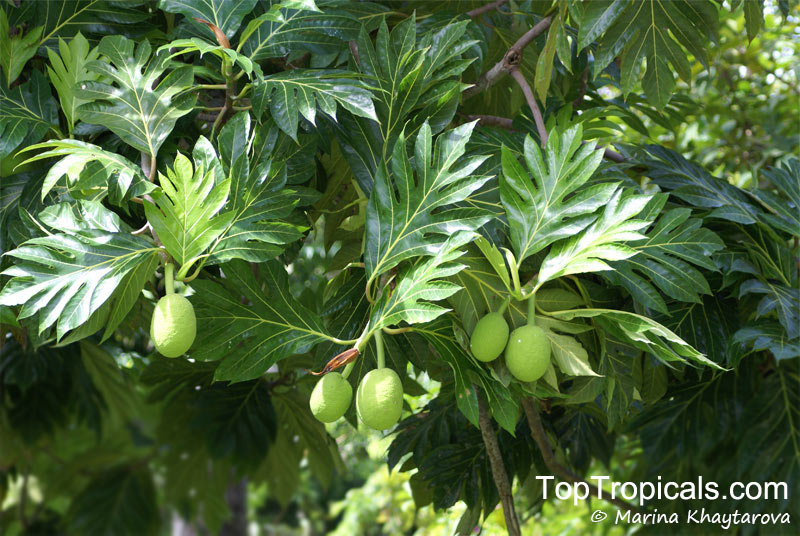Artocarpus altilis (Breadfruit)
Top Tropicals Plant Encyclopedia
Botanical names: Artocarpus altilis, Artocarpus communis
Common name: Breadfruit
Family: Moraceae
Origin: New Guinea






Breadfruit (Artocarpus altilis) is a large tree, typically growing to over 20 ft tall, and requires full sun exposure. It is suitable for growing in USDA hardiness zones 10-11, where temperatures remain above 55F for most of the year. It should be watered regularly and grows best in a loamy soil that drains quickly. In cold regions, it is best to grow this tree in a large pot with well-draining soil to provide enough space for it to grow. If the tree is grown in a pot for an extended period, it is important to repot it periodically to prevent the roots from becoming cramped.
The breadfruit tree produces large fruits that vary in size and shape, ranging from 3 to 18 inches long. The skin of the unripe fruit is green, turning yellow or yellow-brown when ripe. The creamy white to yellow pulp inside is pasty, sweetly fragrant, and has a somewhat soft texture. The fruit can be eaten raw or cooked and is rich in carbohydrates, making it a dietary staple in some parts of the world, particularly Polynesia. In the West Indies, a decoction of the tree's leaves is used to lower elevated blood pressure and relieve asthma. The shoots, bark, and latex also have medicinal uses.
The breadfruit tree is fast growing, reaching up to 80-100 ft in height with a trunk up to 6 ft in diameter. However, some varieties are smaller. The leaves, which can be either evergreen or deciduous depending on the climate, are ovate and up to 3 ft long with deeply cut, pointed lobes. They are bright green and glossy on the upper surface, with conspicuous yellow veins and dull, yellowish, and coated with minute, stiff hairs on the underside. The flowers are tiny and similar to those of the jackfruit tree. Male flowers are densely set on a drooping spike 5 to 12 inches long, initially yellow and becoming brown. Female flowers are massed in a rounded or elliptic, green head about 3 inches long, which develops into the compound fruit. The fruit can be oblong, cylindrical, ovoid, rounded, or pear-shaped and ranges from 3 to 18 inches in length. Generally, the fruit is green at first and turns yellow or yellow-brown when ripe. When fully ripe, the fruit is somewhat soft, and the interior is cream-colored or yellow and pasty, with a sweet fragrance. All parts of the tree, including the unripe fruit, contain milky, gummy latex. There are two main types of breadfruit: the normal, "wild" type (cultivated in some areas) with seeds and little pulp, and the "cultivated" (more widely grown) seedless type. However, occasionally a few fully developed seeds are found in seedless cultivars. The seeds are oval, about 3/4 inch long, dull brown with darker stripes. The moist inner pulp of seedless breadfruit is eaten after cooking and has the taste and texture of potatoes. The seeds of the seeded breadnut form can be cooked by boiling or roasting.
Similar plants: Artocarpus altilis (Breadfruit)
- Artocarpus camansi (Seeded breadfruit)
- Artocarpus dadah (Green Tampang)
- Artocarpus elasticus (Terap)
- Artocarpus glaucus (Artocarpus)
- Artocarpus heterophyllus (Jackfruit)
- Artocarpus hypargyraeus (Kwai Muk)
- Artocarpus integer (Chempedak)
- Artocarpus lakoocha (Lakoocha)
- Artocarpus odoratissimus (Marang)
- Artocarpus scortechinii (Merawan)
The moist inner pulp of the fruit is eaten after cooking, and has the taste and texture of potatoes.
Recommended Fertilizer: SUNSHINE C-Cibus - Crop Nutrition Booster
SUNSHINE-Honey - sugar booster
